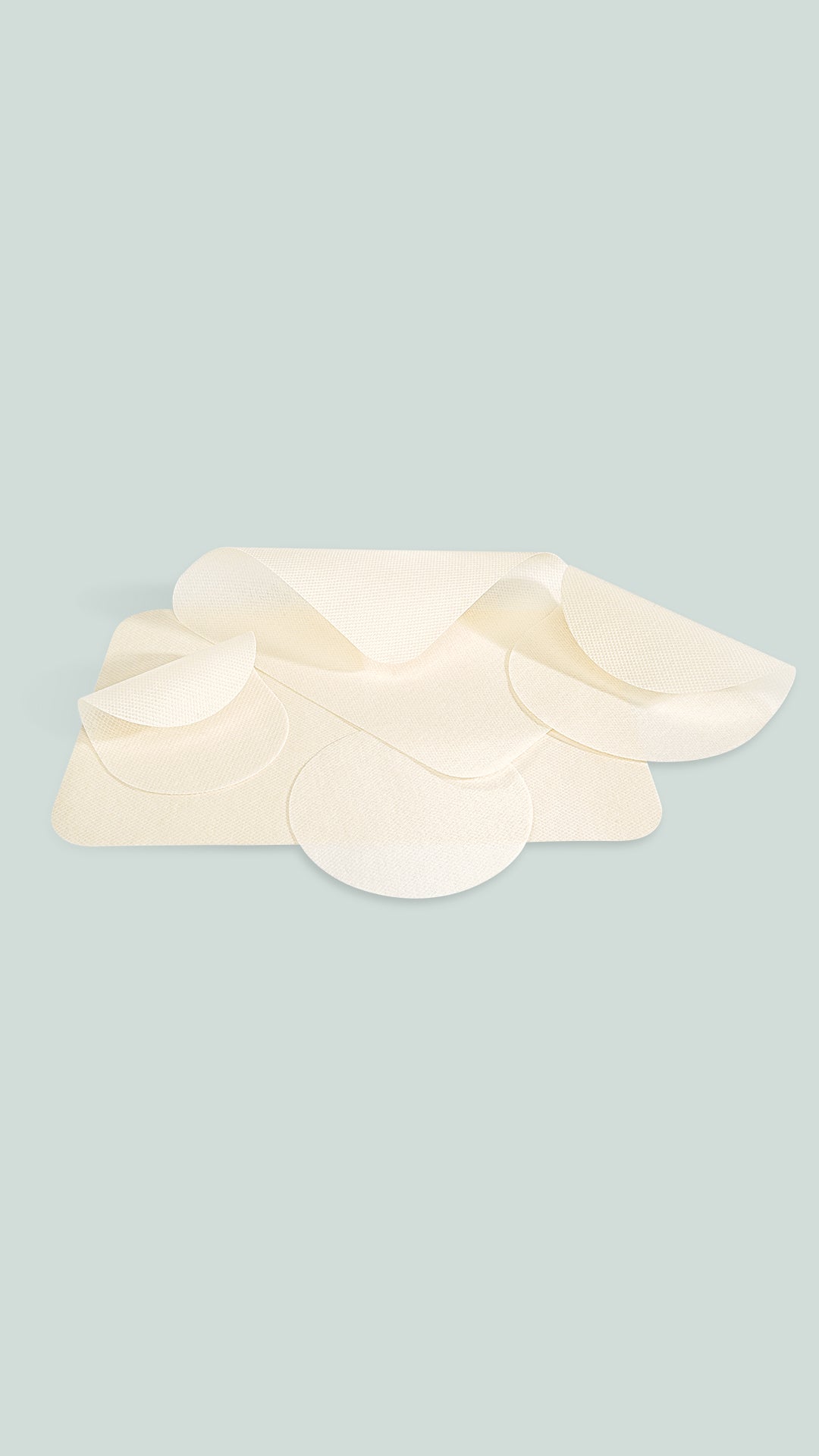GORE® SYNECOR Intraperitoneal Biomaterial
Enables a single, effective hernia repair in complex patients1

Tri-layer hybrid solution
GORE® SYNECOR Intraperitoneal Biomaterial offers a tri-layer hybrid solution that is strong for the life of the repair and is designed to support a single, effective repair2 in complex patients (VHWG 2).3 It is intended for use in the repair of ventral / incisional hernias that may require the addition of a non-absorbable reinforcing or bridging material.
Strength
Durable strength of the material helps to support robust healing that may lower the risk of recurrence versus lightweight and mid-weight meshes, which may have inadequate strength in complex patients (VHWG 2).4-6
Rapid vascularity and ingrowth
The GORE 3D PGA:TMC Web Scaffold fosters cellular infiltration and rapid vascularization which may aid in the overall treatability of the device to mitigate the need for removal if postoperative infection were to occur.1,7-9
Ease of use
Designed for ease of use during minimally invasive (laparoscopic, robotic) and open surgical procedures.2 The material is flexible and conformable and has memory for easy unrolling, handling and optimal placement.
Related to this product
Post-operative view: 18-months post-implantation – Razvan Opreanu, M.D.
Laparoscopic Ventral Hernia Repair
- Linn JG, Mallico EJ, Doerhoff CR, Grantham DW, Washington RG Jr. Evaluation of long-term performance of an intraperitoneal biomaterial in the treatment of ventral hernias. Surgical Endoscopy 2023;37:3455-3462.
- W. L. Gore & Associates, Inc. GORE SYNECOR Intraperitoneal Biomaterial Design Control (DC) Matrix. Flagstaff, AZ: W. L. Gore & Associates, Inc; 2024. [Design Control Matrix – DC Matrix]. MD184278. Rev 3.
- Ventral Hernia Working Group, Breuing K, Butler CE, et al. Incisional ventral hernias: review of the literature and recommendations regarding the grading and technique of repair. Surgery 2010;148(3):544-558.
- Petro CC, Nahabet EH, Criss CN, et al. Central failures of lightweight monofilament polyester mesh causing hernia recurrence: a cautionary note. Hernia 2015;19(1):155-159.
- Cobb WS, Warren JA, Ewing JA, Burnikel A, Merchant M, Carbonell AM. Open retromuscular mesh repair of complex incisional hernia: predictors of wound events and recurrence. Journal of the American College of Surgeons 2015;220(4):606-613.
- Warren JA, McGrath SP, Hale AL, Ewing JA, Carbonell AM 2nd, Cobb WS 4th. Patterns of recurrence and mechanisms of failure after open ventral hernia repair with mesh. American Surgeon 2017;83(11):1275-1282.
- Crawford N. Assessment of Vascularity via Micro CT in Various Patch Devices. Flagstaff, AZ: W. L. Gore & Associates, Inc; 2016. [Final study report]. 2344TL.
- W. L. Gore & Associates, Inc. Clinical Evaluation Report for GORE® SYNECOR Intraperitoneal Biomaterial. Flagstaff, AZ: W. L. Gore & Associates, Inc; 2025. [Clinical Evaluation Report – CER]. MD146932. Rev 7.
- Berman A. Evaluation of Plexus with film and ETHICON PHYSIOMESH® in a 30-day rabbit intraperitoneal model. Flagstaff, AZ: W. L. Gore & Associates, Inc; 2015. [Study protocol]. 2335SC.

Refer to Instructions for Use at eifu.goremedical.com for a complete description of all applicable indications, warnings, precautions and contraindications for the markets where this product is available. RXOnly
INDICATIONS FOR USE IN EUROPE: The GORE® SYNECOR Intraperitoneal Biomaterial device is intended for use in the repair of ventral/incisional hernias that may require the addition of a non-absorbable reinforcing or bridging material.
CONTRAINDICATIONS: The GORE® SYNECOR Intraperitoneal Biomaterial is contraindicated for use in reconstruction of cardiovascular defects.